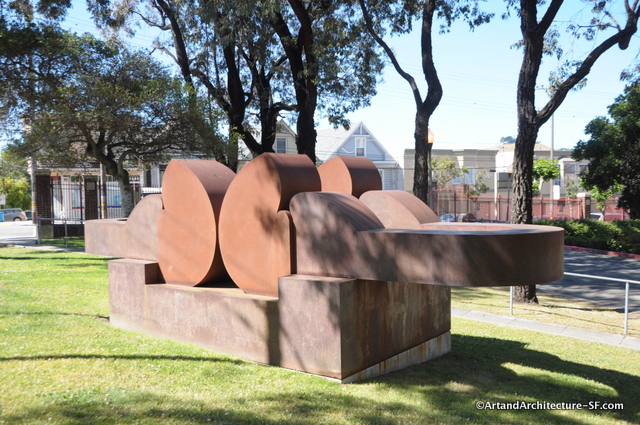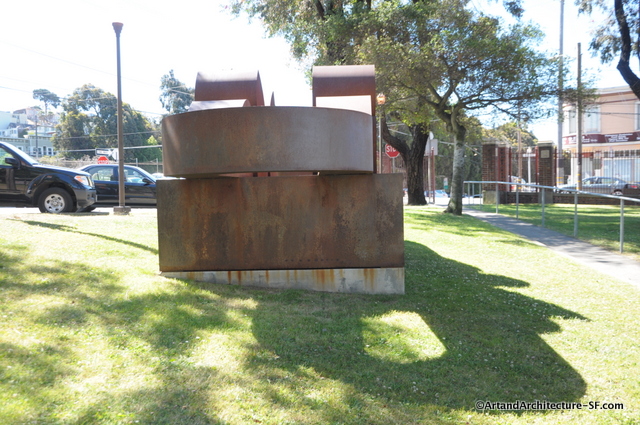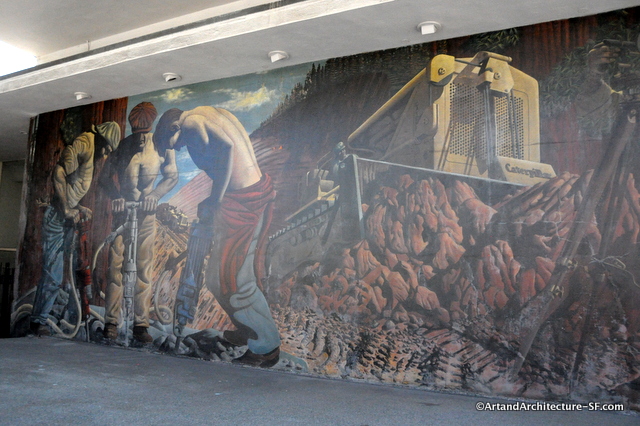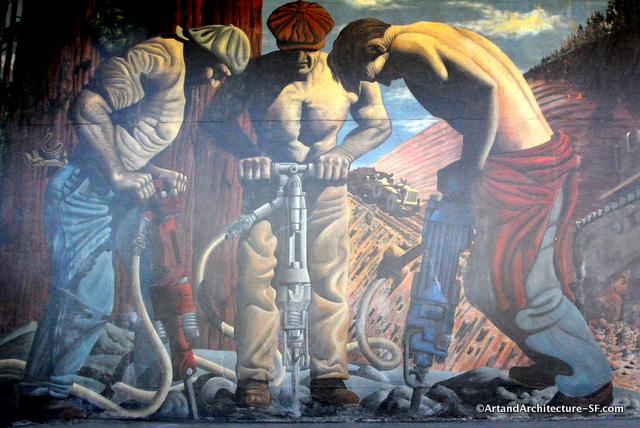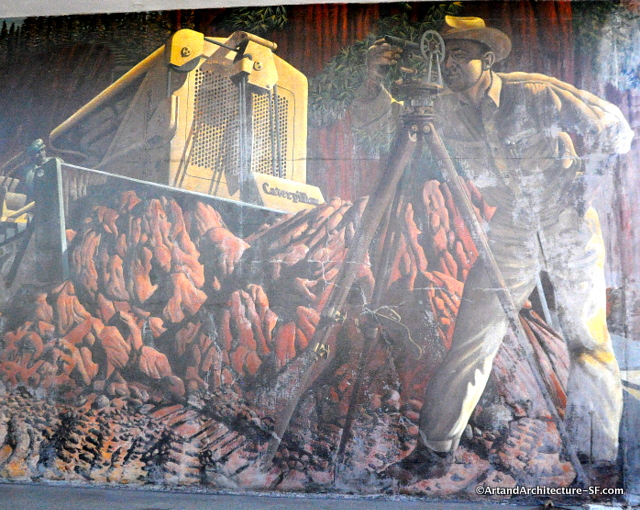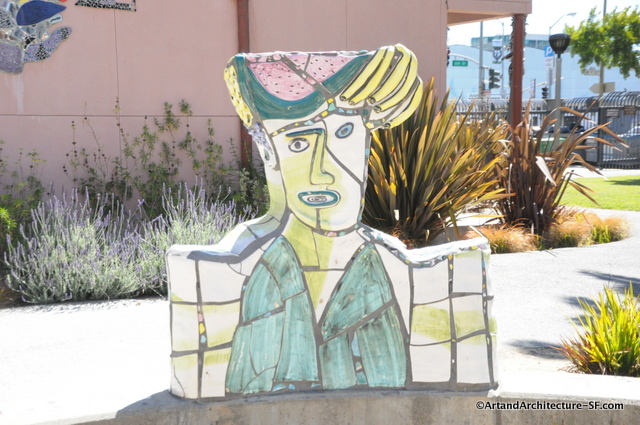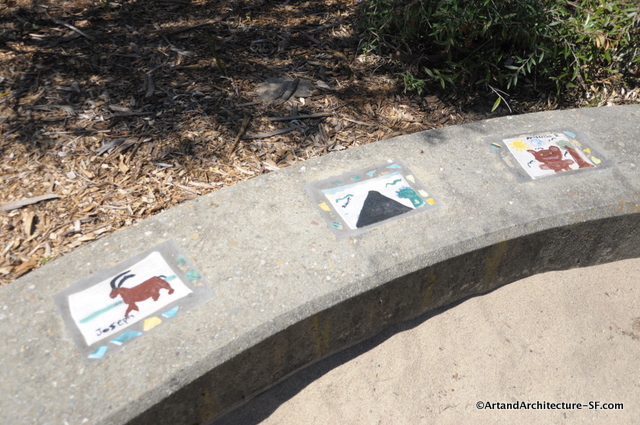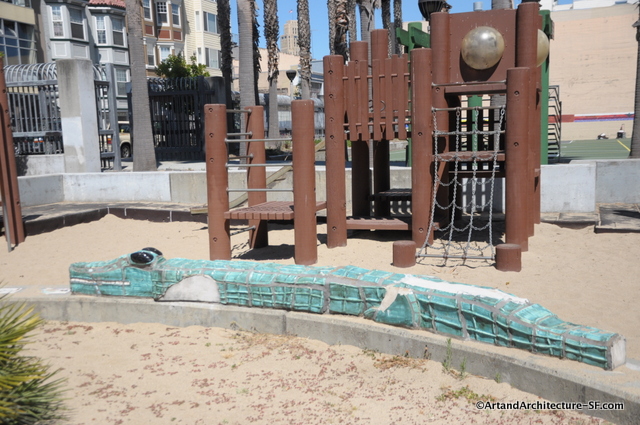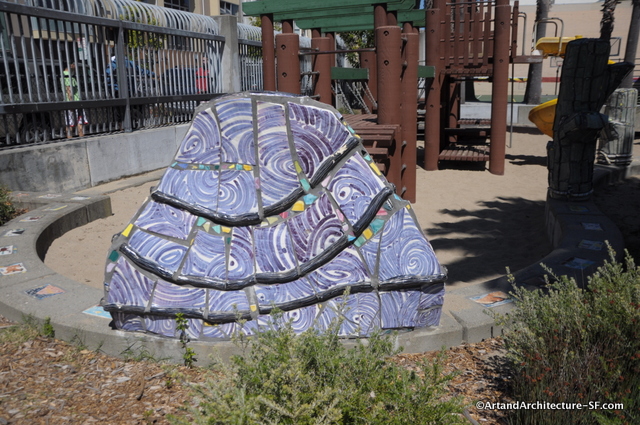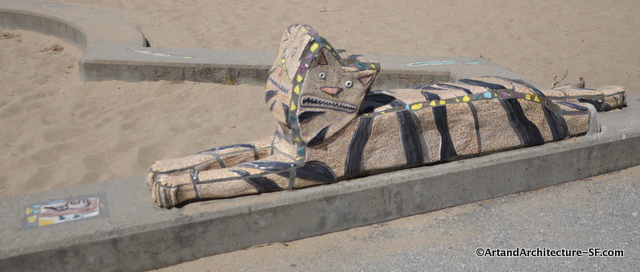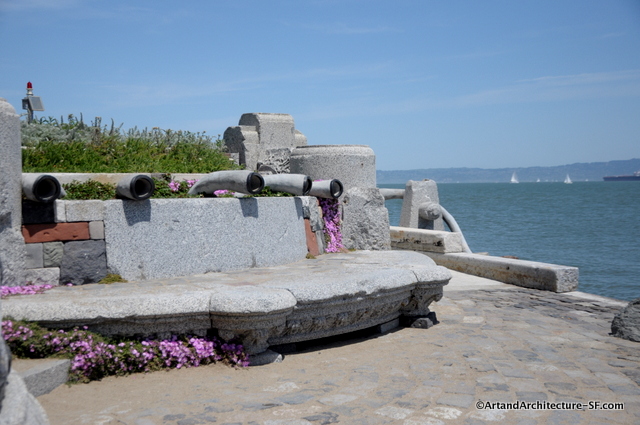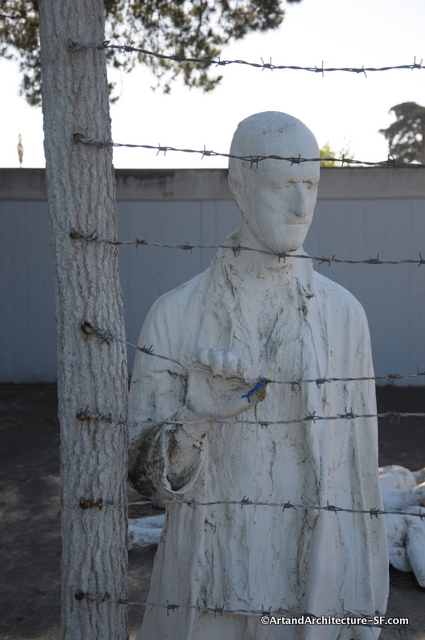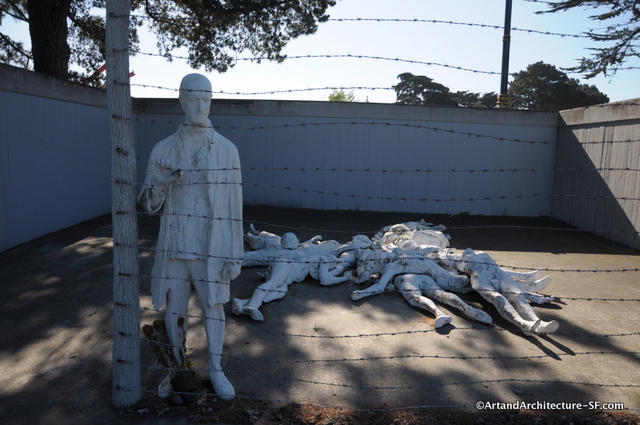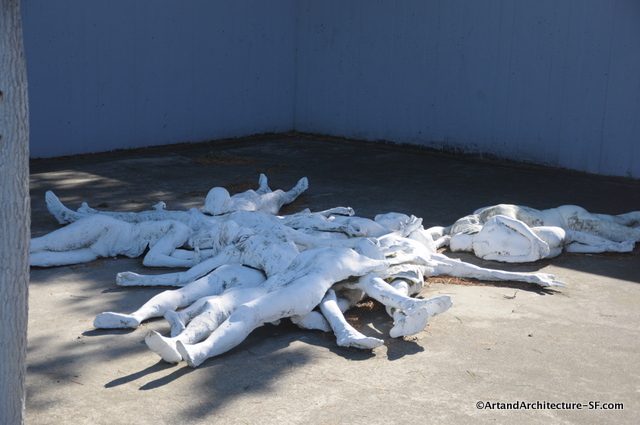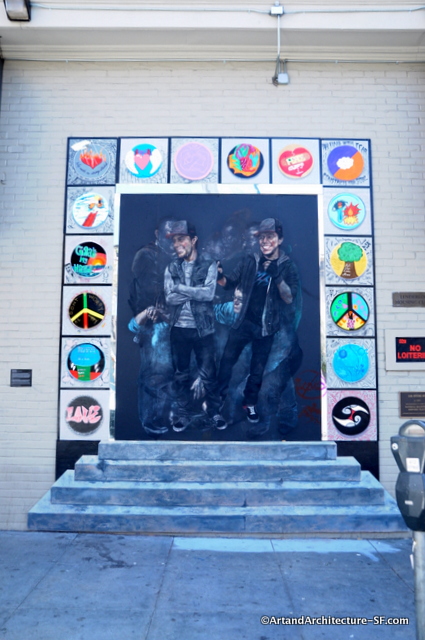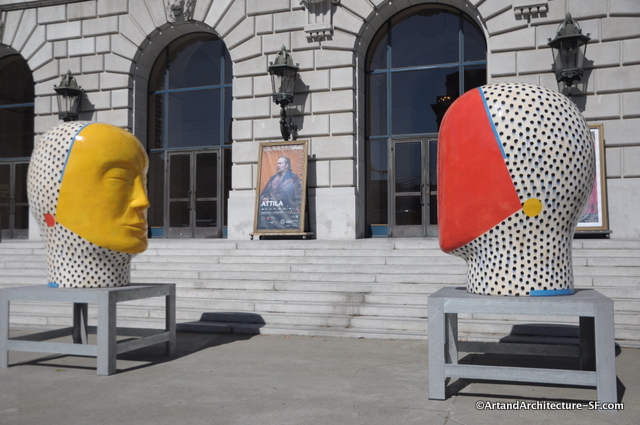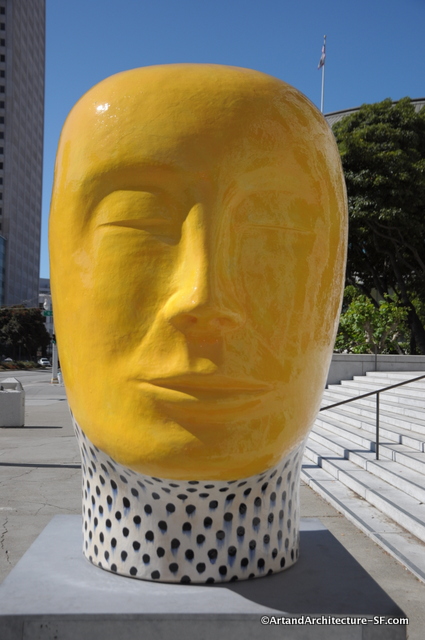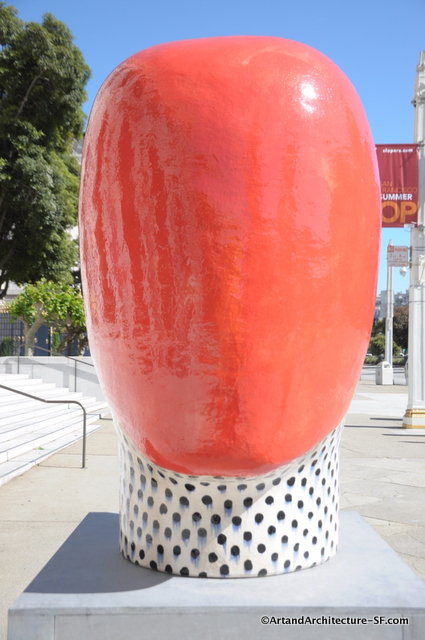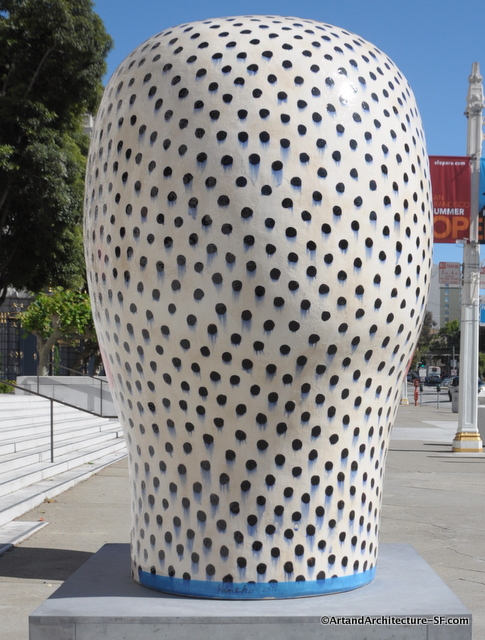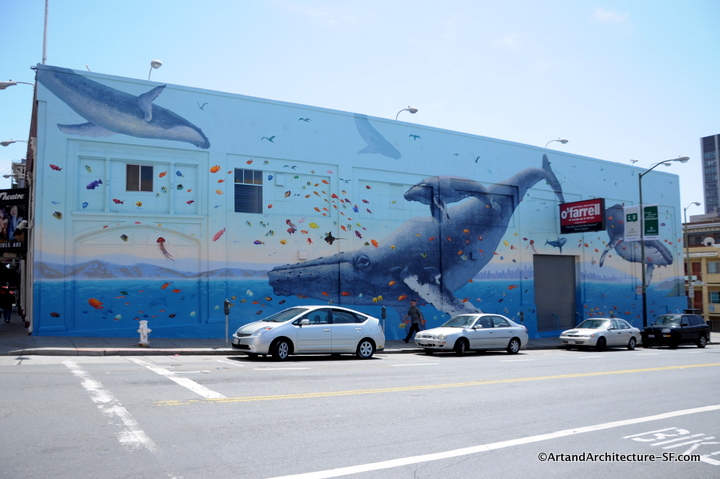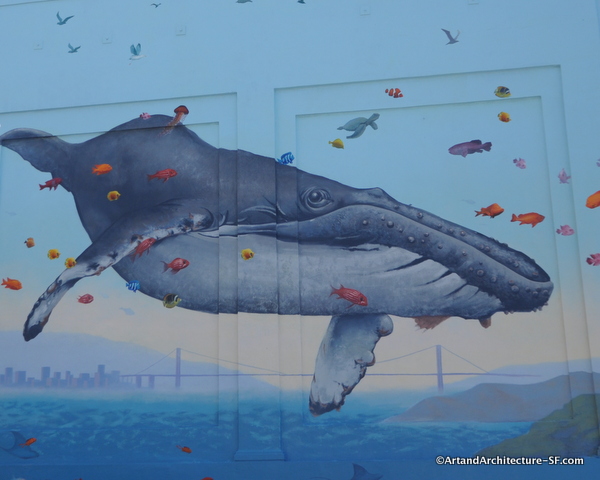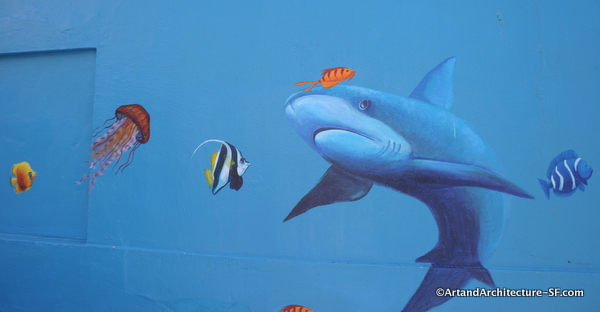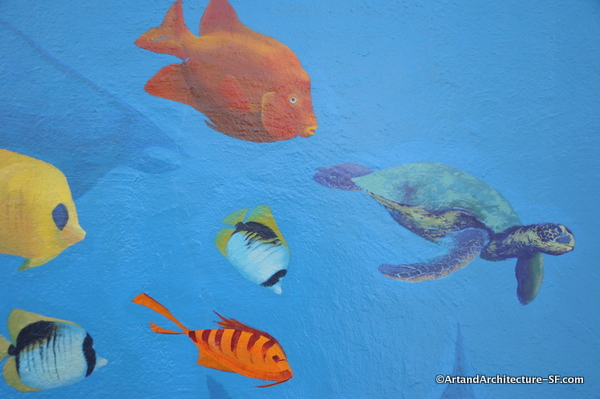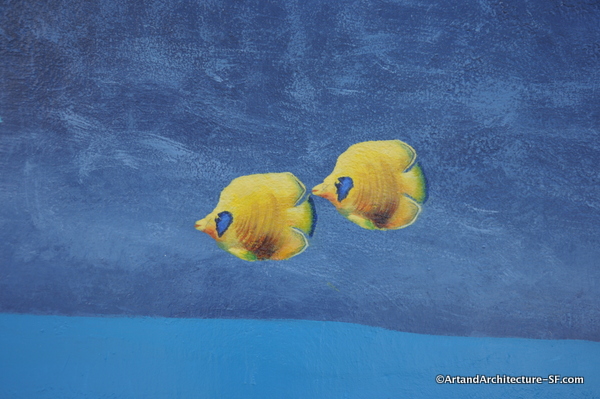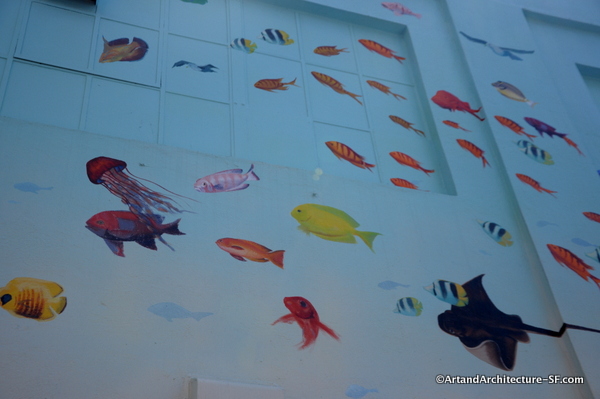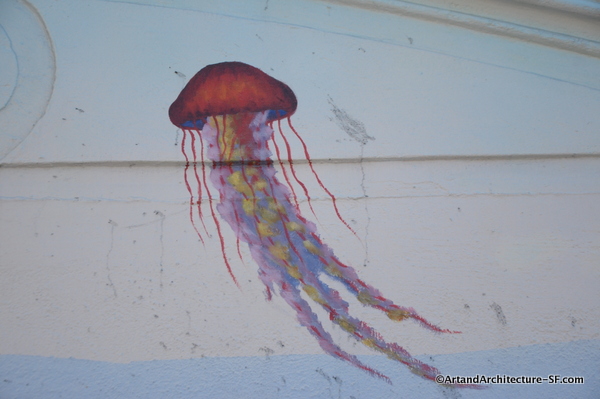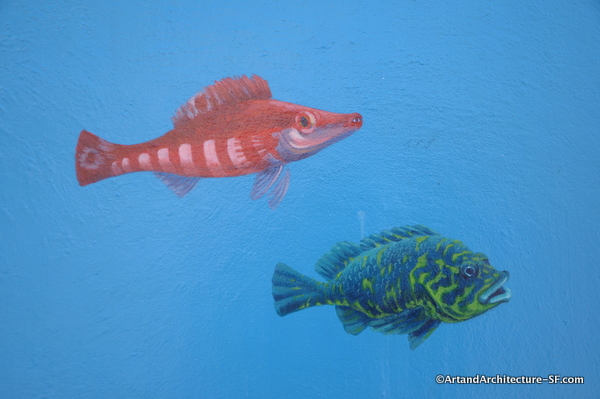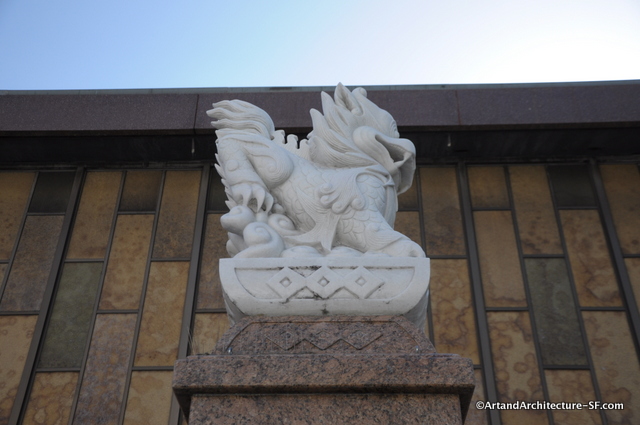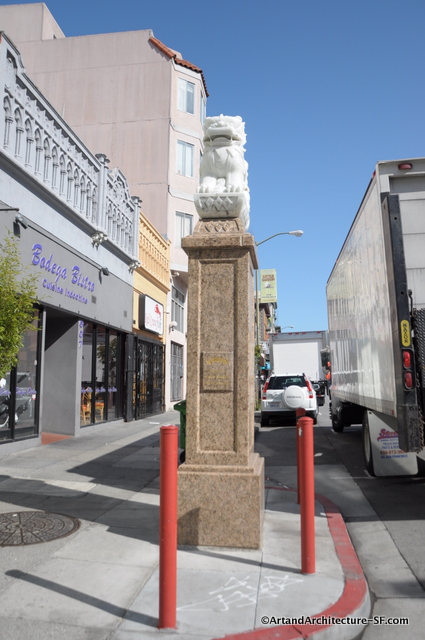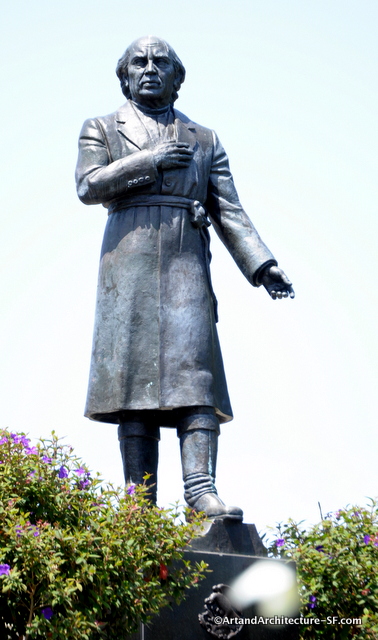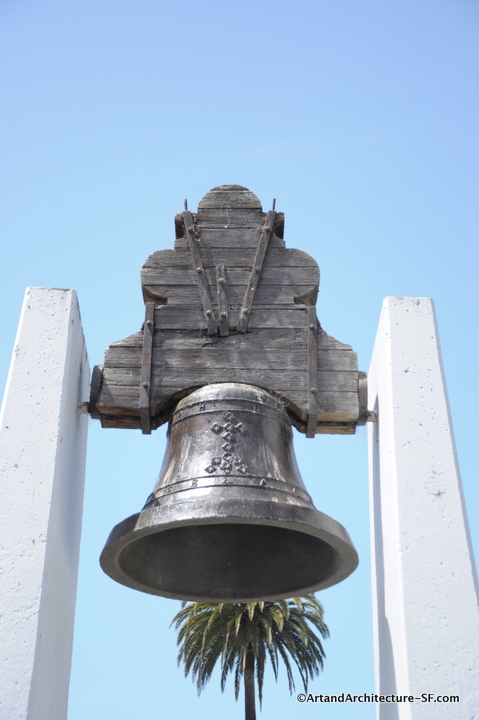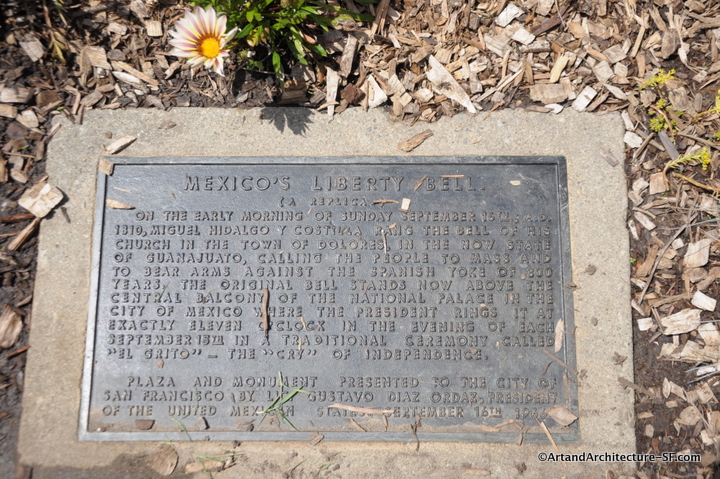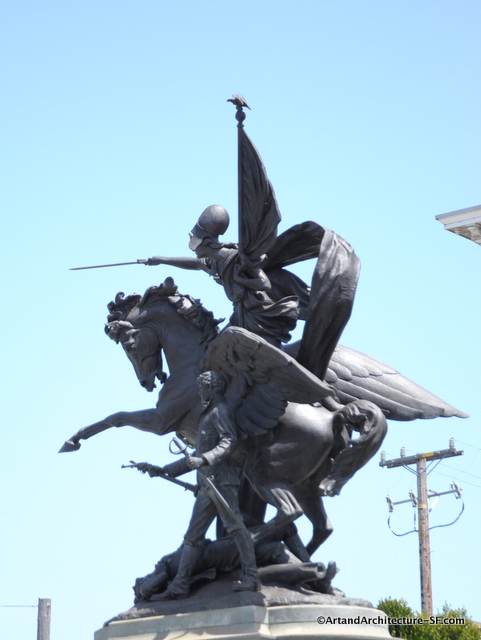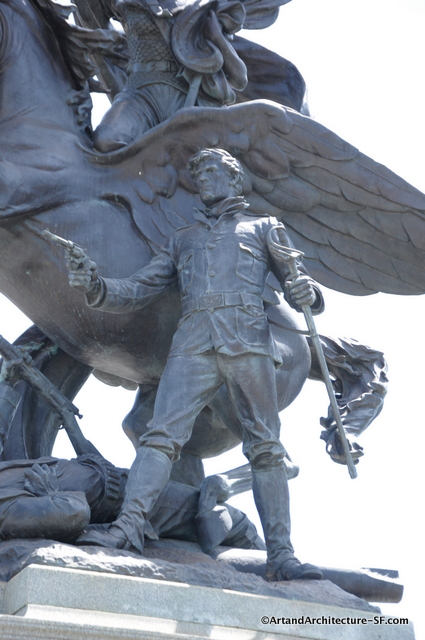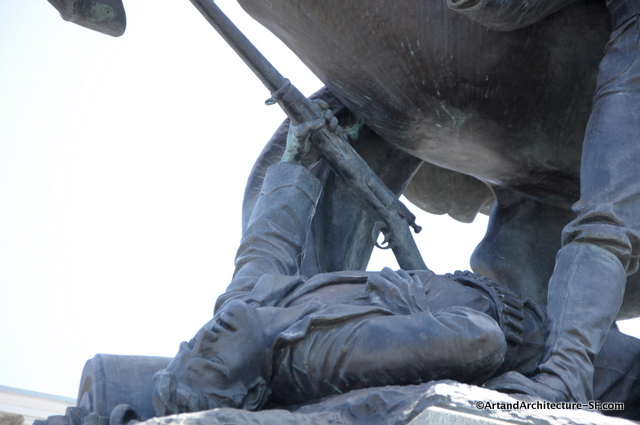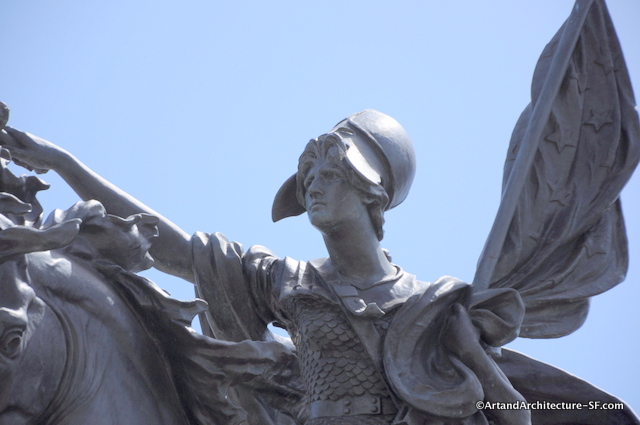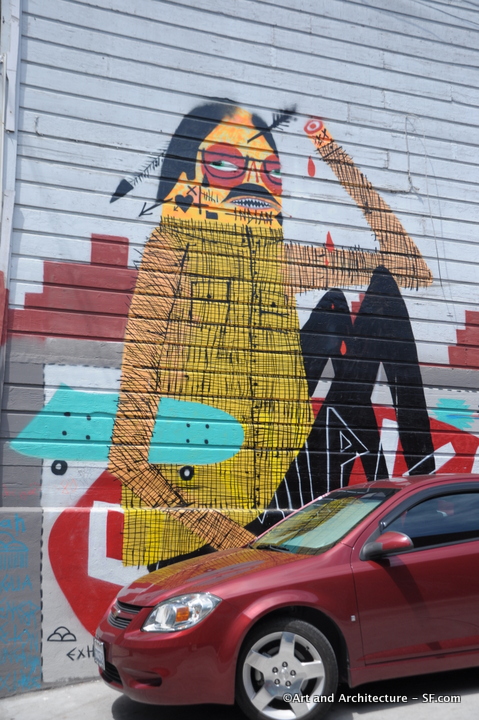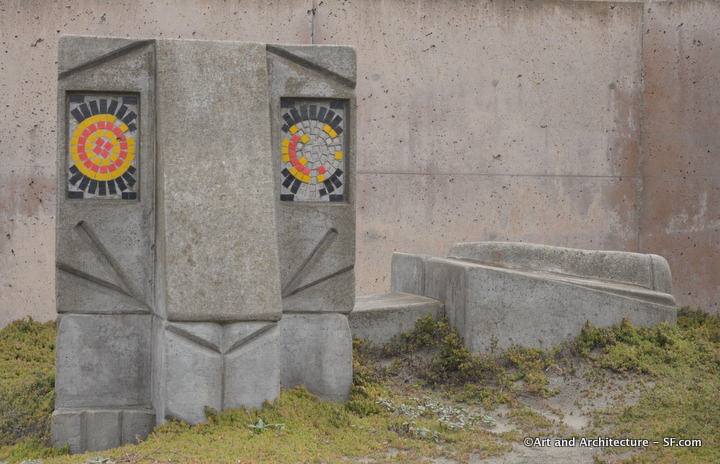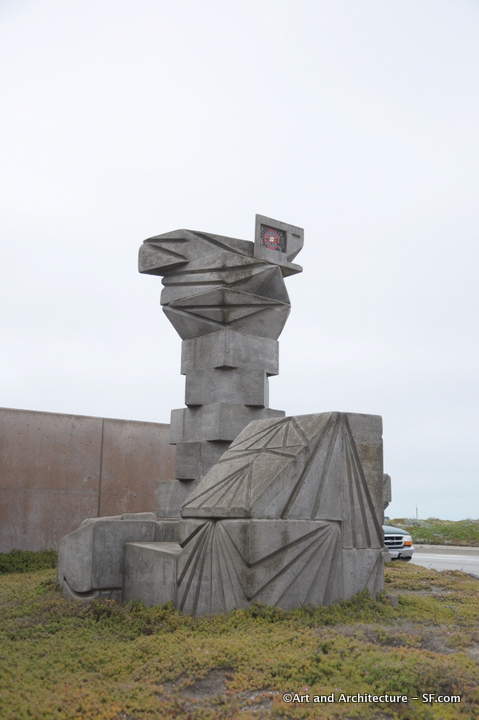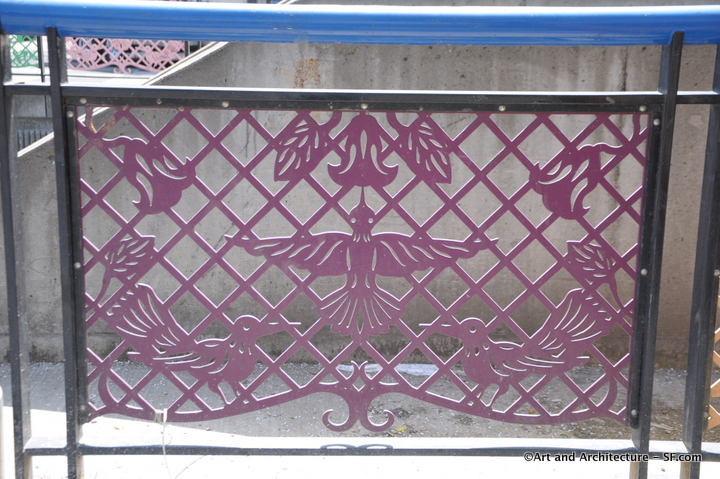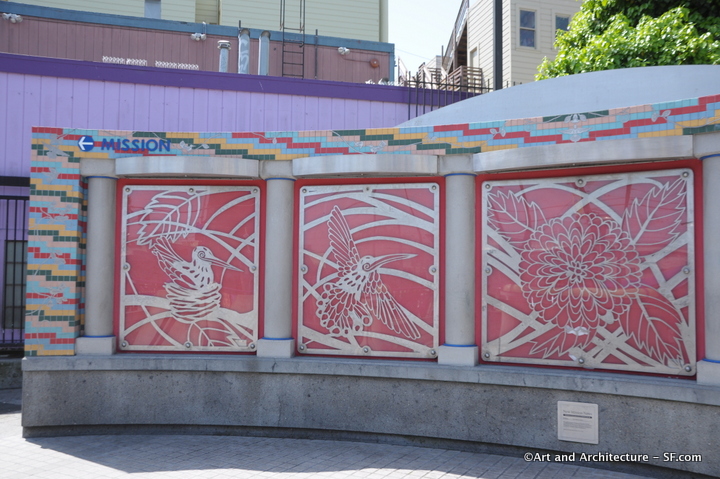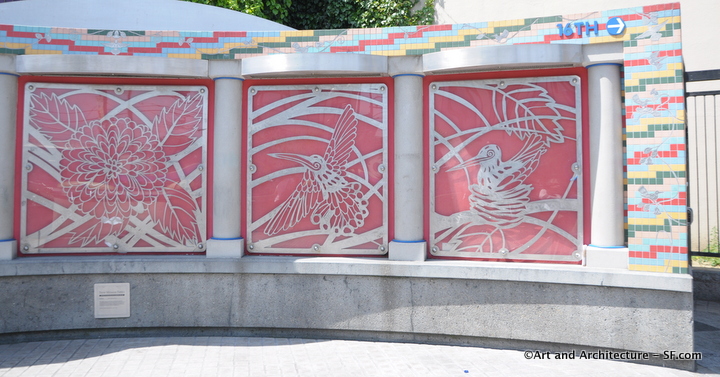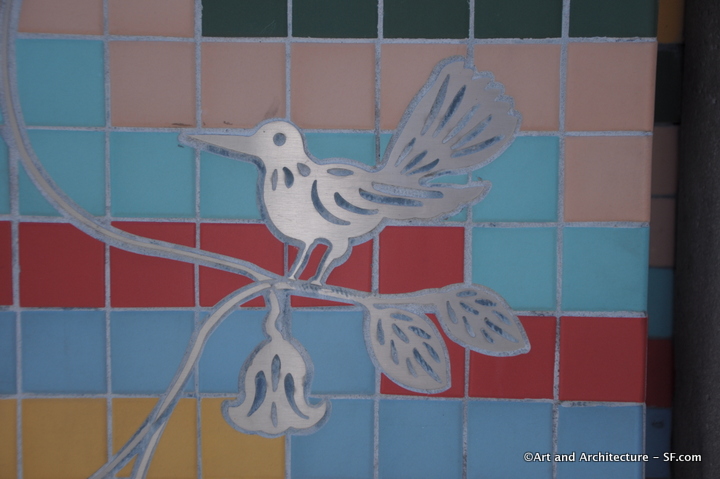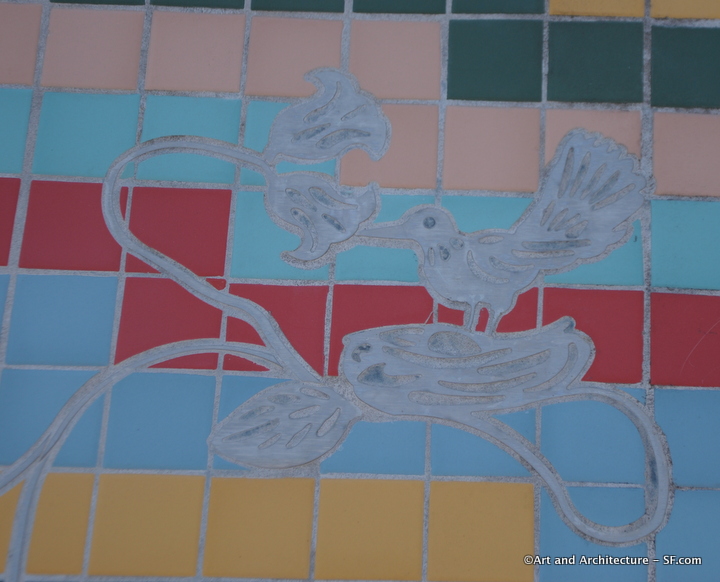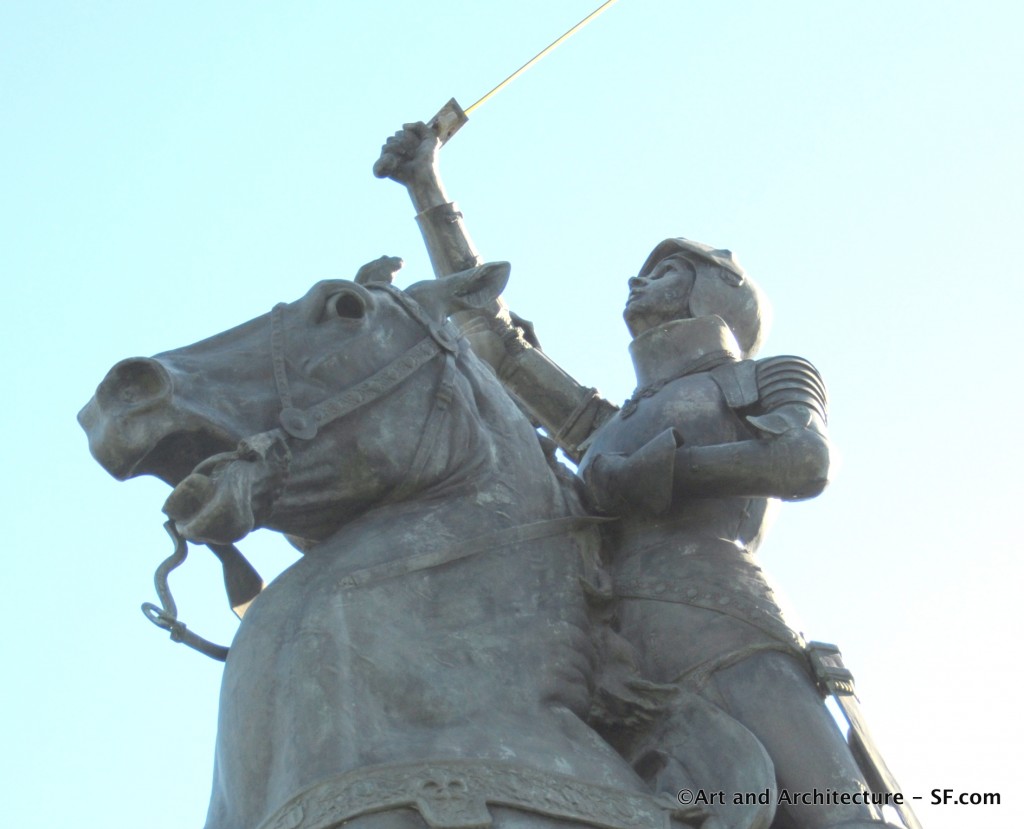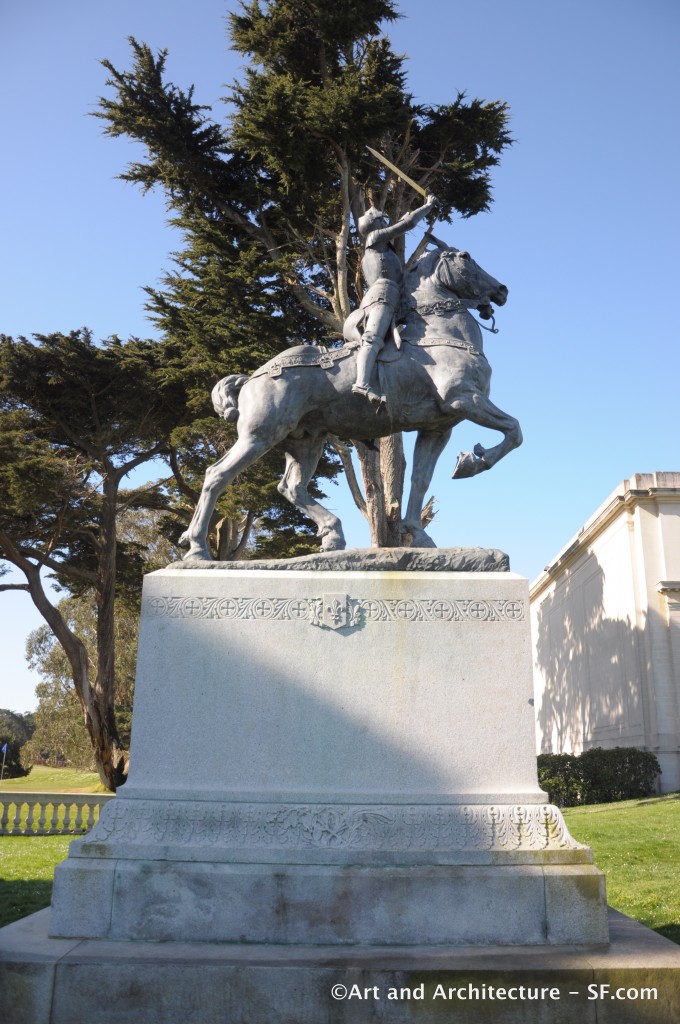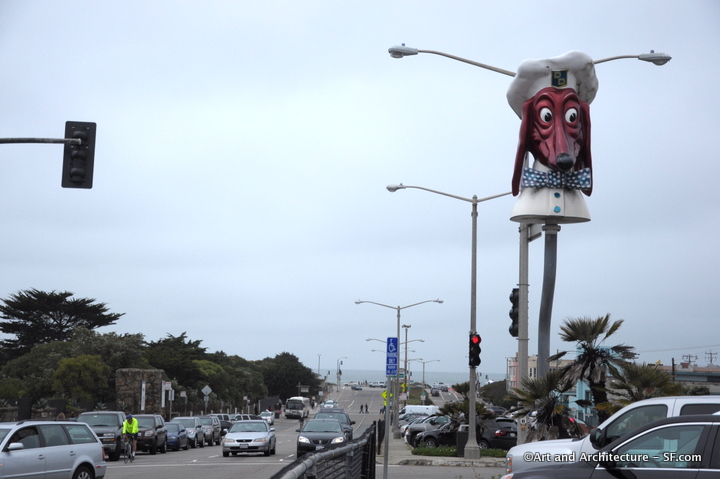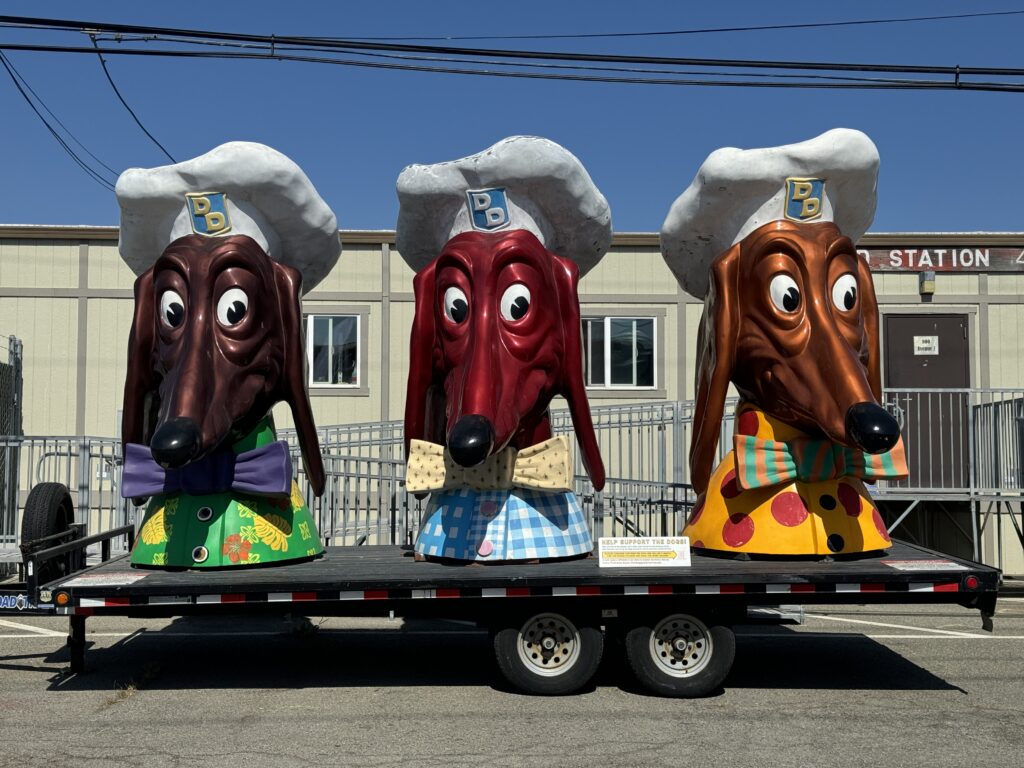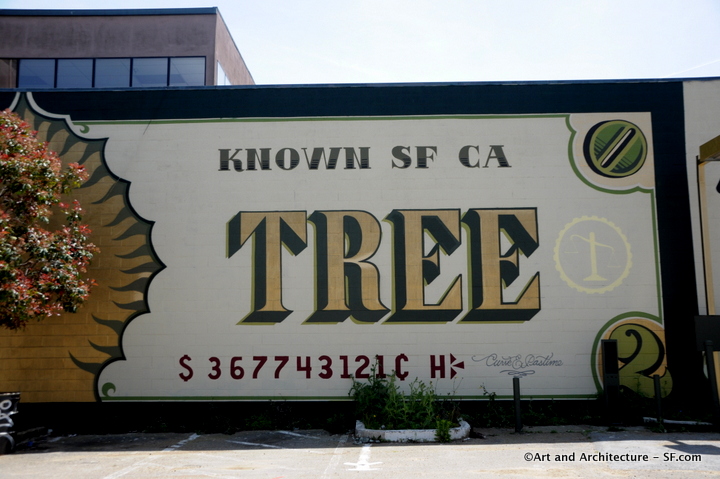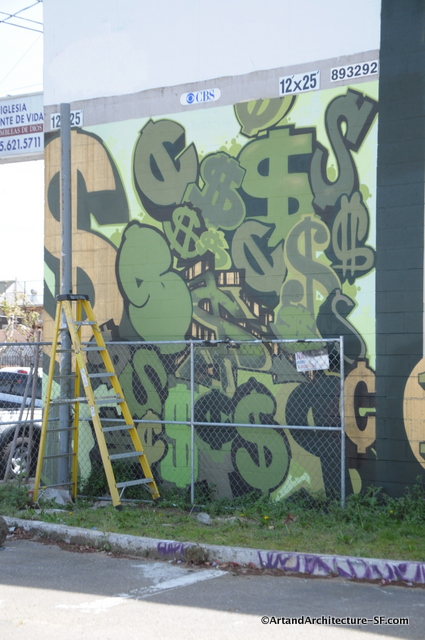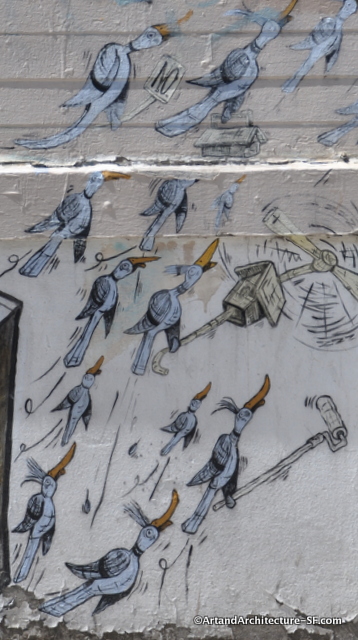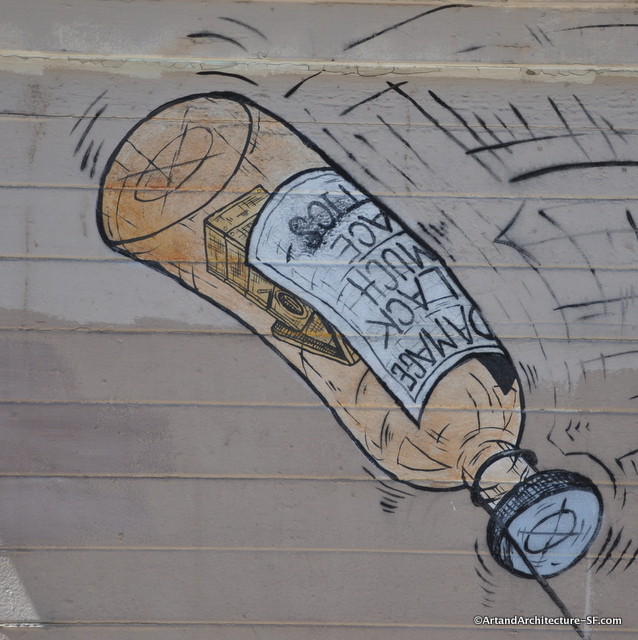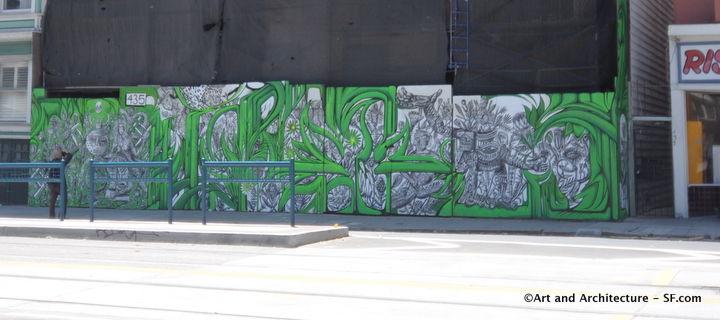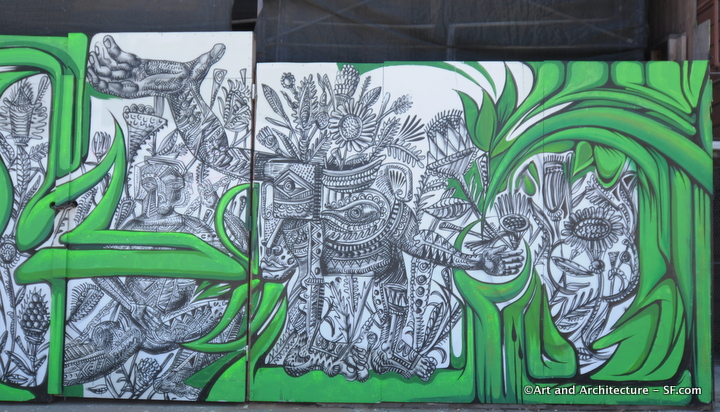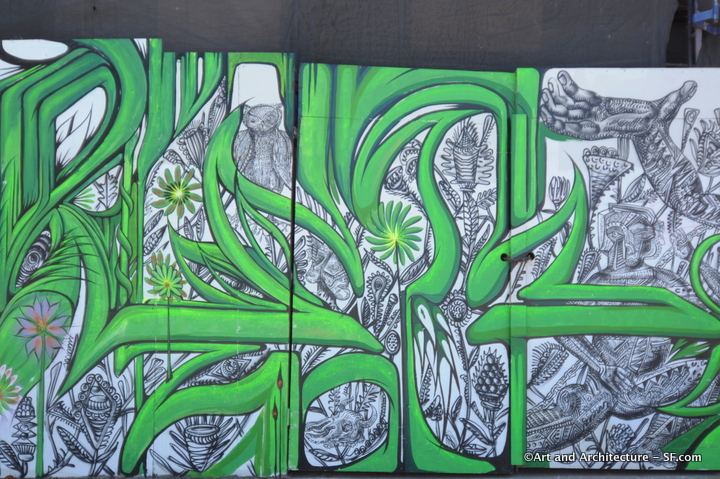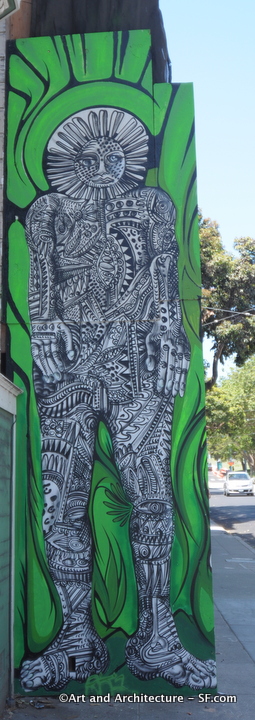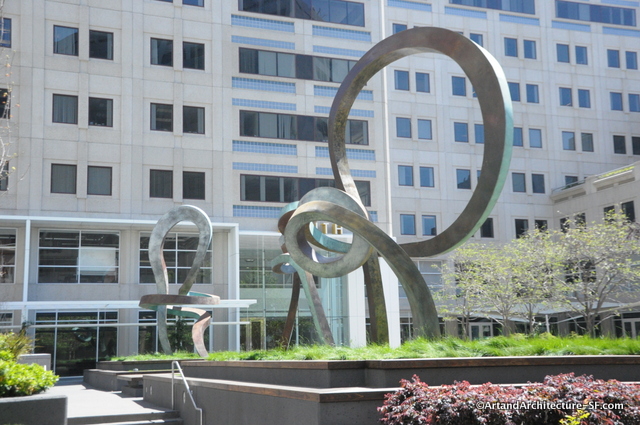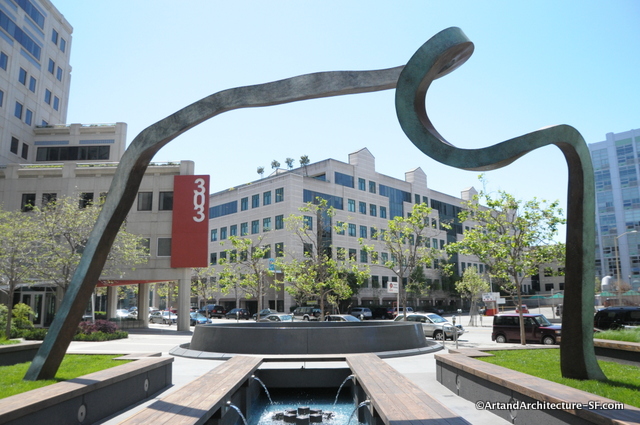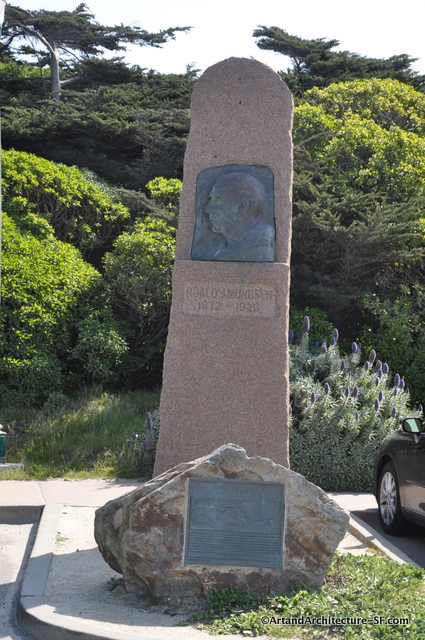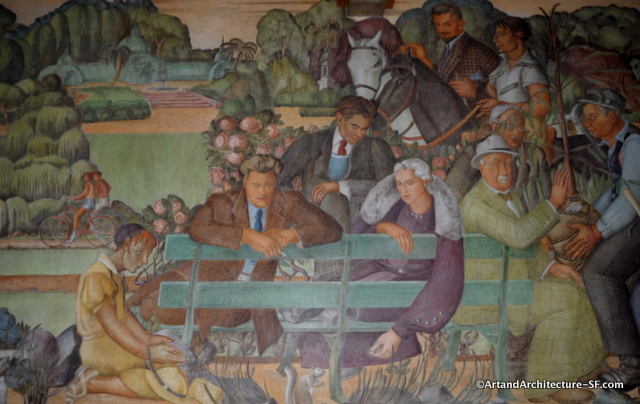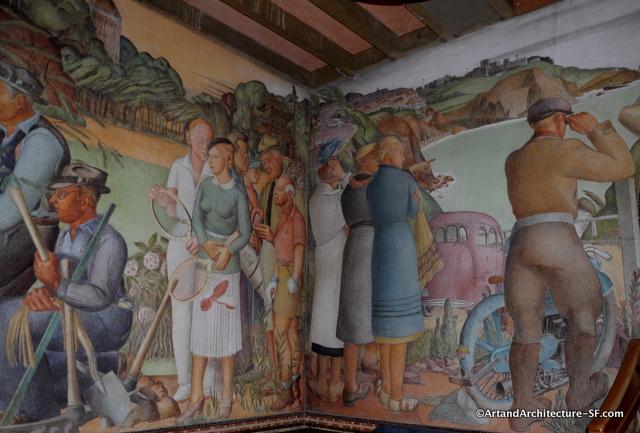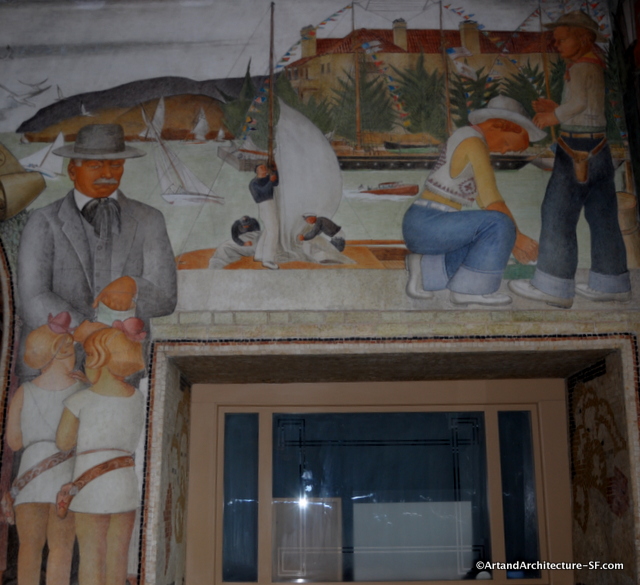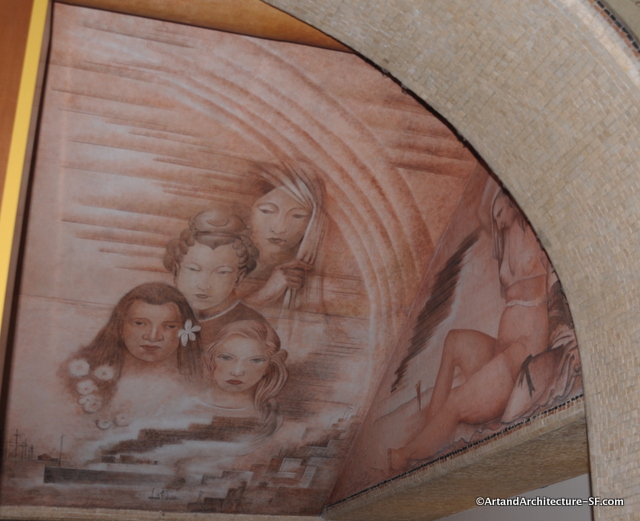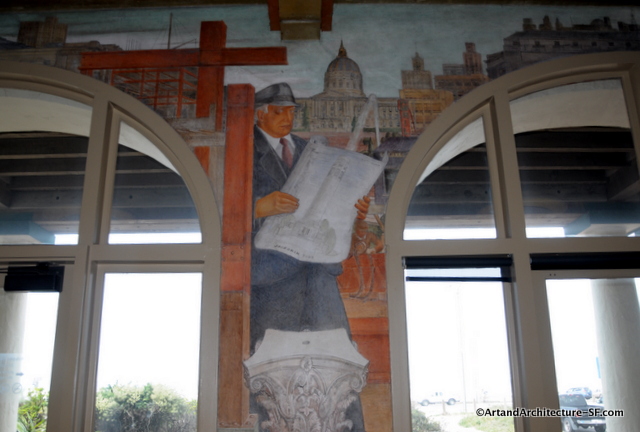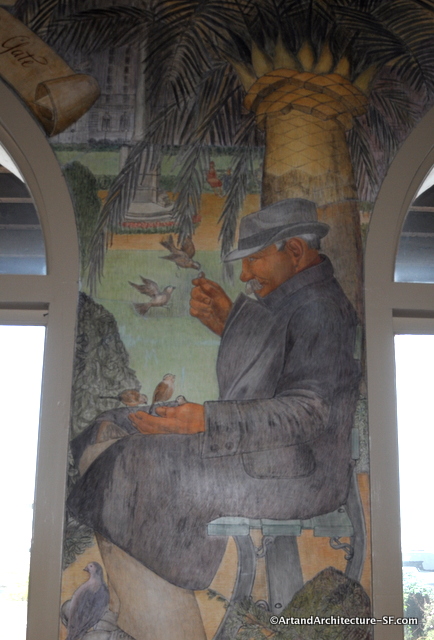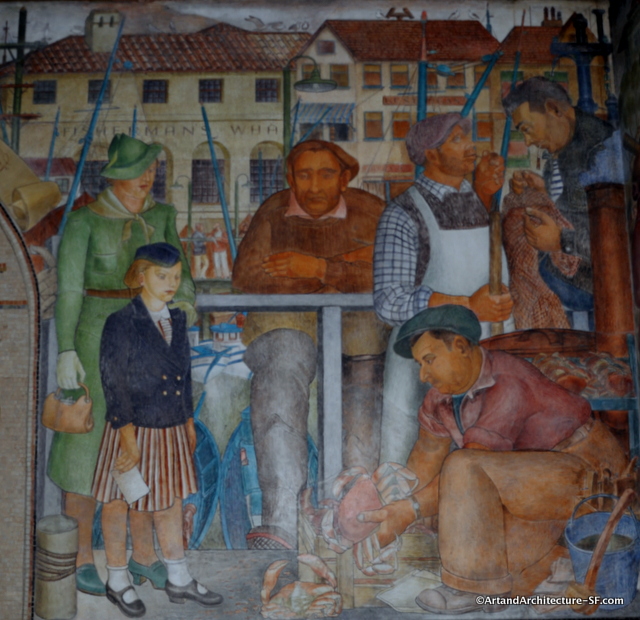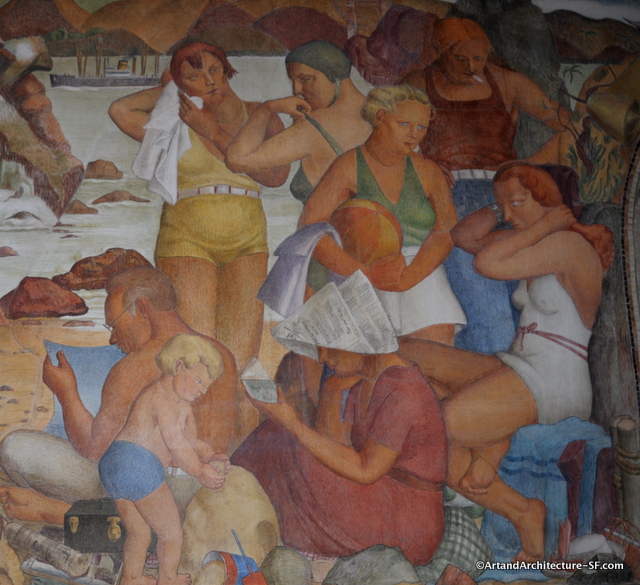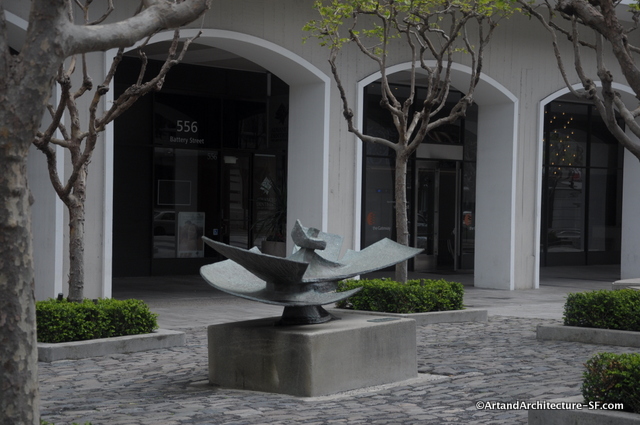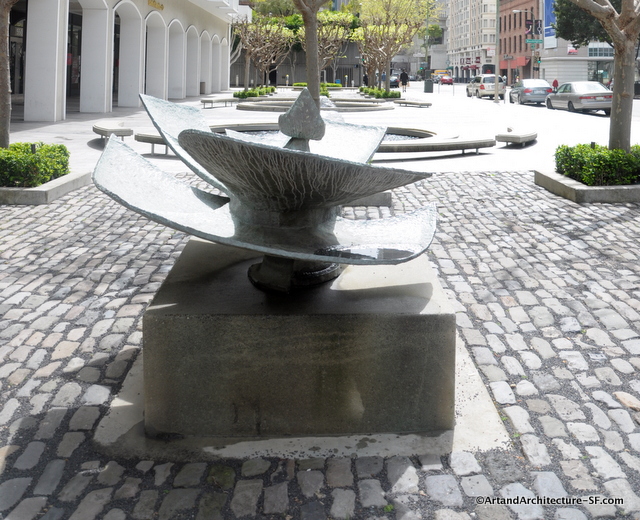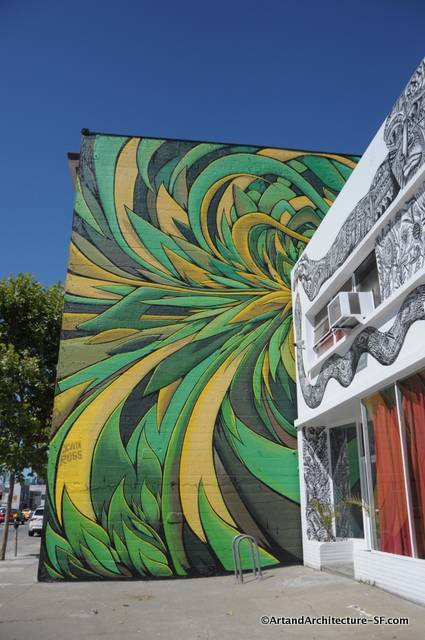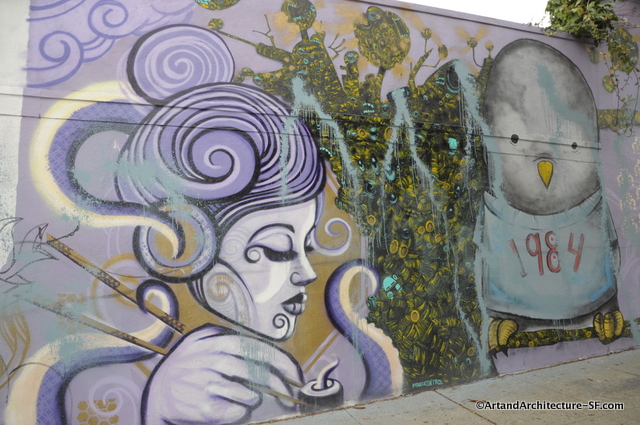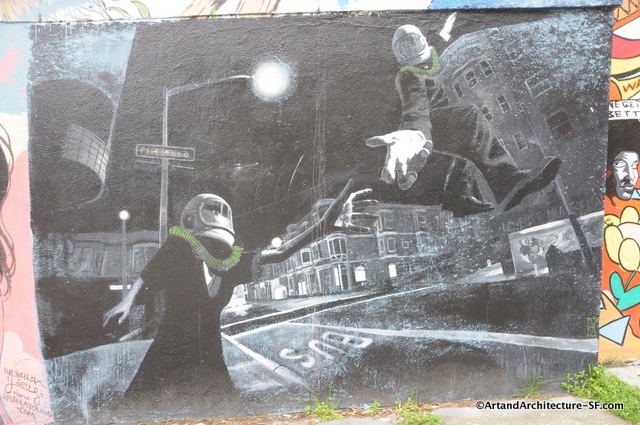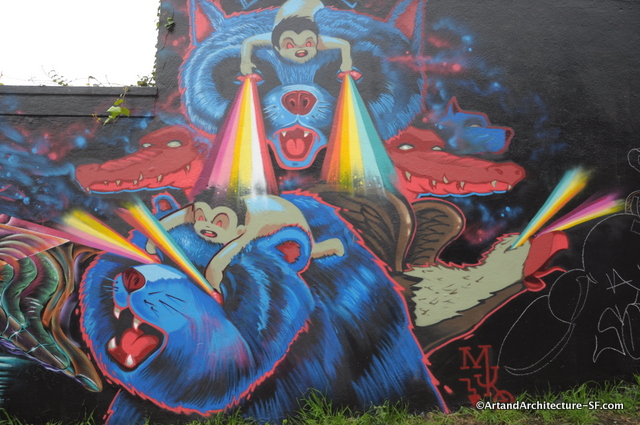The Mission
18th and Lexington
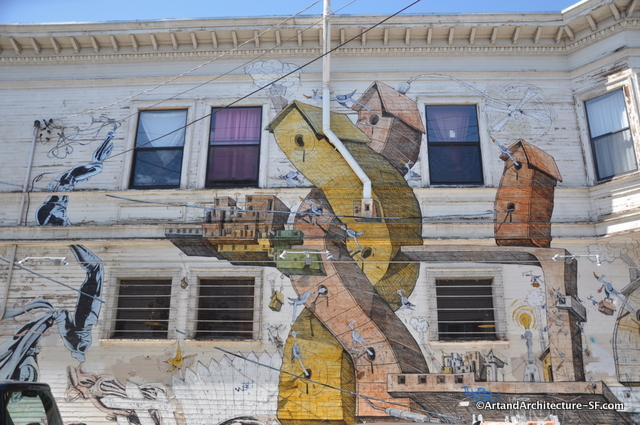
Generator by Andrew Schoultz and Aaron Noble
*
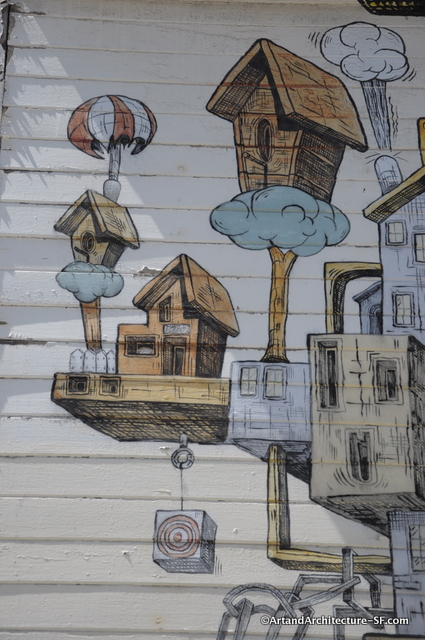 *
*
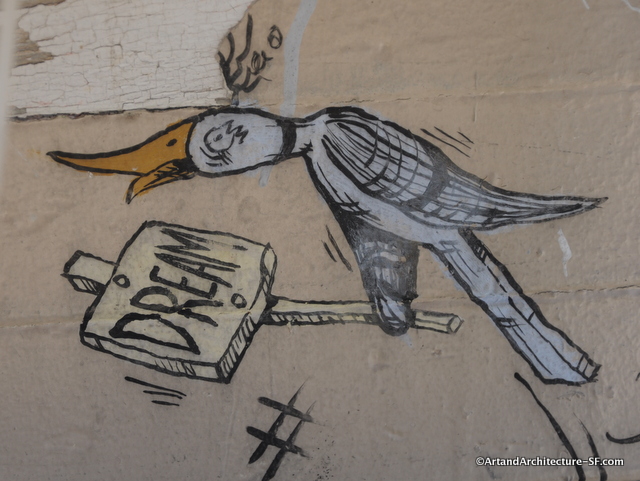 *
*
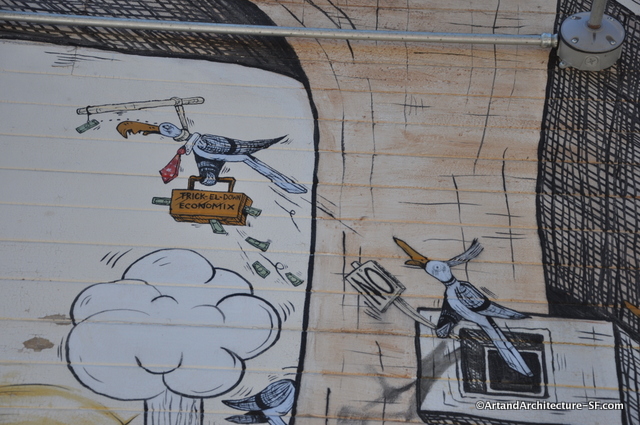 *
*
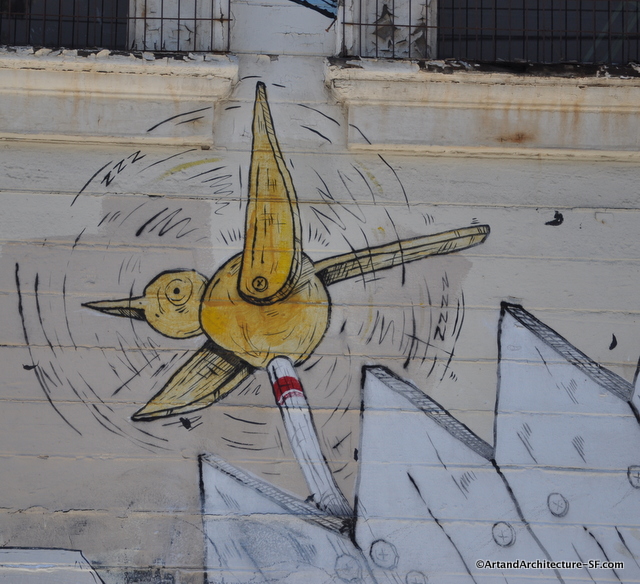 *
*
This description of the mural is from an absolutely amazing, September 1, 2004, article in the SF Weekly by Sam Chennault. It not only gives a wonderful description of the two artists, but chronicles their artistic life. More importantly, Chennault addresses the various concerns many people have about street art. Please take the time to give it a read.
The mural’s central images are two large birdhouses that haphazardly spiral into each other. Smaller structures jut from the two main houses, and groups of smaller houses and buildings sprout from the larger birdhouse’s various orifices. Some of Schoultz’s blue birds, wearing exasperated expressions, can be seen fleeing the structures. Some of the birds have long sticks tied to their necks; the sticks dangle dollar bills in front of their faces, ever out of reach.
To the right of this chaotic scene, Noble’s taut creatures — collages of comic-book characters reassembled as clusters of muscle and prosthetic weaponry — loom over the proceedings, while wires protrude from generators above them and into Schoultz’s scene. Just as Schoultz’s world is defined by its intricate imperfections and chaos, Noble’s creatures are studies in abstraction and exactness. When taken as a whole, Noble’s images refer to nothing outside of themselves and serve no apparent function, but the cold precision of his lines suggests technological functionality, which acts as a nice counterpoint to Schoultz’s industrial disarray.
The mural was recently featured on the cover of the hipster journal Alarm Magazine and provides an important landmark for an area of the Mission District. “It’s incredibly striking,” says Kevin B. Chen, program director for the visual arts at Intersection for the Arts, San Francisco’s oldest alternative art space, which is known for presenting new and experimental work. “Most people walking down 18th do a double take at first. Just the colors catch your eye, and then you realize that it runs the length of that entire building.”
Aaron Noble
Inspired by comic book imagery, Aaron Noble’s wall paintings incorporate superhero body parts morphed, stretched, and free floating in a ‘negative space’ landscape. He is well-known in San Francisco for his earlier WPA-styled outdoor murals depicting the city’s labor history. Now his interests involve contemporary popular street culture and Western comic art.
Andrew Schoultz
Art is an uncontrollable passion and obsession. After many travels around the United States for such things as skateboarding and graffiti art, I found a home in San Francisco in 1997, and among other things, a great community to exist in and make art. The past nine years have brought me the development of a repertoire of iconic images. Through murals, paintings, installations, and drawings, I have used these images to tell stories about everyday life in America, filtering political commentary through the forms of graffiti art and underground comics, fused with clipart from the early 1900’s and medieval renderings that chart the history of man and nature. The relationship between man and nature has been a re-occurring theme in my work, and also the effects of globalism and capitalism on the world. Although heavily interested in showing work and doing large multi-media installations in the gallery and museum setting, I have spent a tremendous amount of time doing murals and various work in the streets of America and abroad. I have an intense interest in painting large-scale imagery on walls in the public space, that address and inform the very diverse audience of the general public, including children, about current social and political issues.

Sama Sama, means You’re Welcome in Indonesian.
The “Ellis Act” is a California State law which says that landlords have the unconditional right to evict tenants to “go out of business.” For an Ellis eviction, the landlord must remove all of the units in the building from the rental market, i.e., the landlord must evict all the tenants and can not single out one tenant (with low rent) and/or remove just one unit from the rental market. When a landlord invokes the Ellis Act, the apartments can not be re-rented, except at the same rent the evicted tenant was paying, for five years following the evictions, While there are restrictions on ever re-renting the units, there are no such restrictions on converting them to ownership units
*



